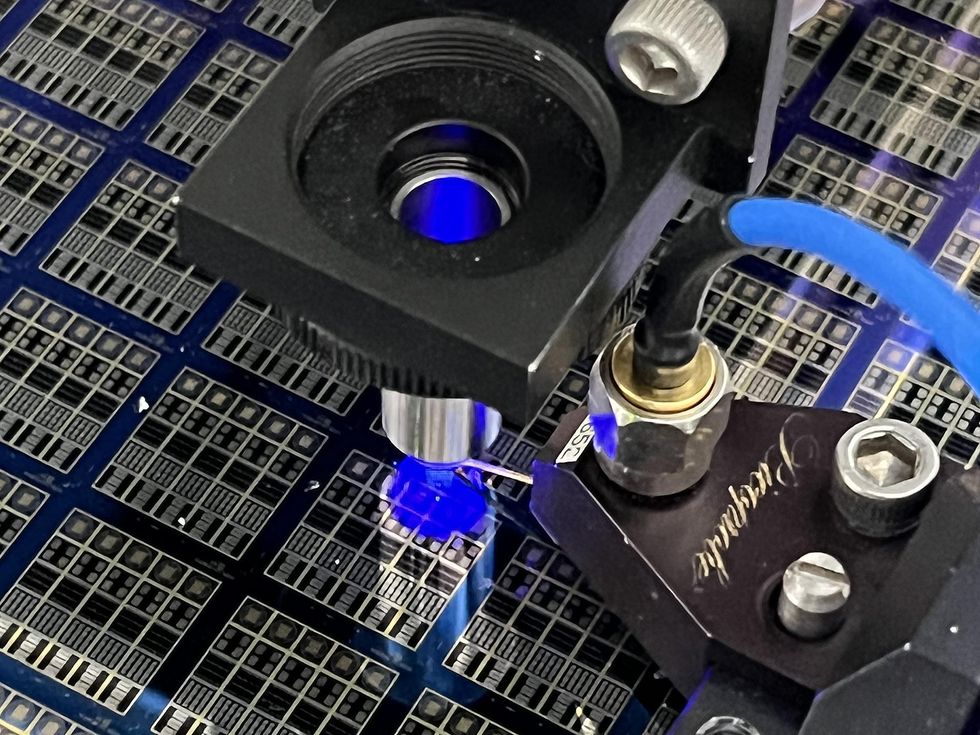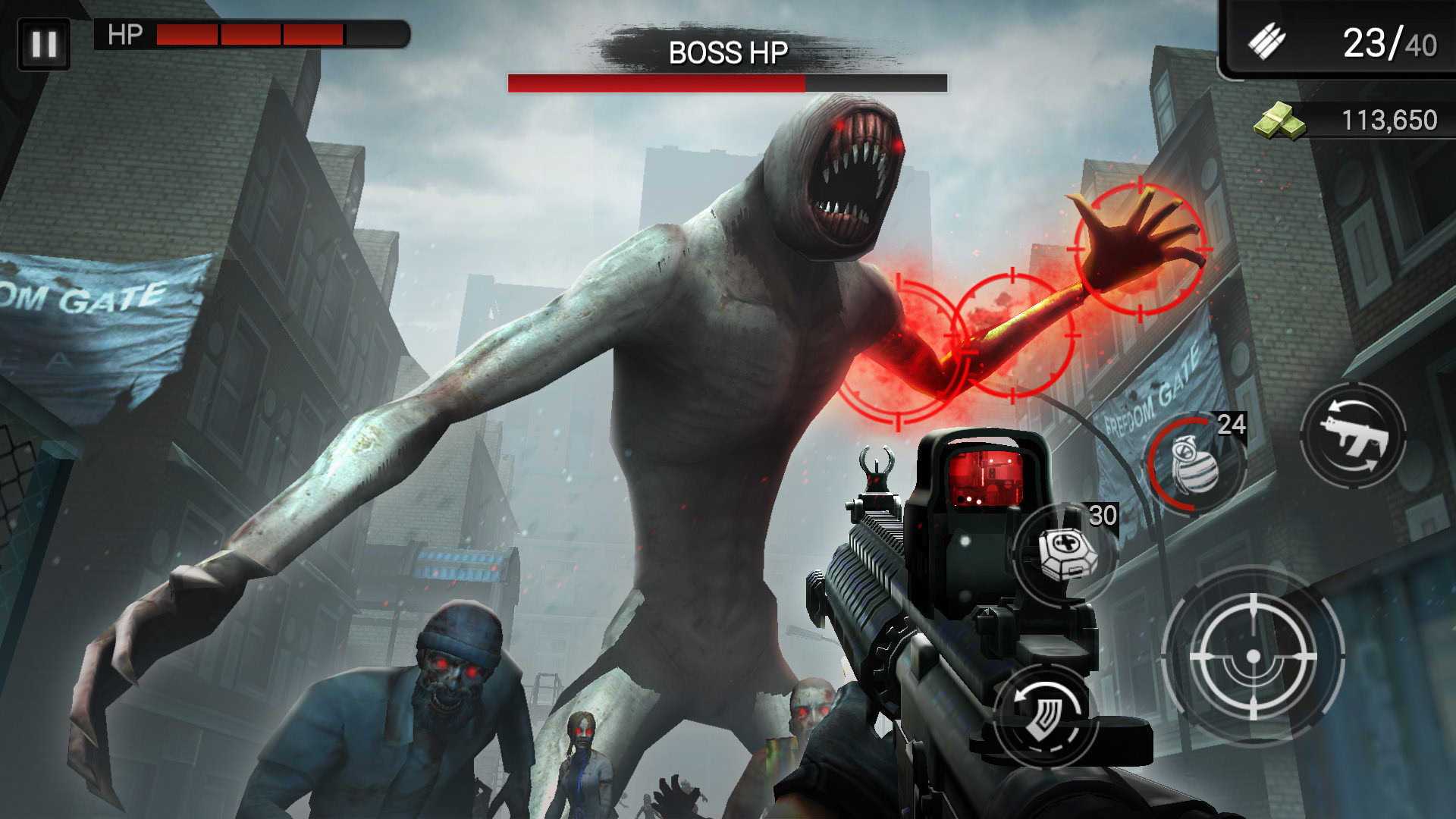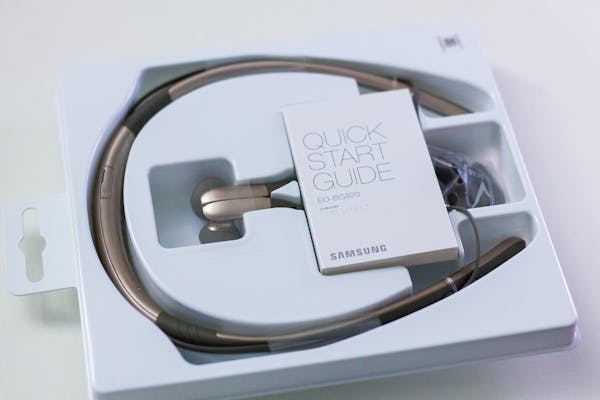Flea-Sized Robots Walk a Coin-Edge-Sized Path
[ad_1]

The means to make selections autonomously is not just what makes robots valuable, it can be what makes robots
robots. We worth robots for their ability to sense what is actually likely on all around them, make choices based mostly on that information, and then get handy steps without the need of our input. In the past, robotic selection building followed extremely structured rules—if you feeling this, then do that. In structured environments like factories, this performs nicely plenty of. But in chaotic, unfamiliar, or badly outlined settings, reliance on regulations tends to make robots notoriously terrible at working with everything that could not be exactly predicted and prepared for in advance.
RoMan, along with several other robots which include house vacuums, drones, and autonomous autos, handles the difficulties of semistructured environments by way of artificial neural networks—a computing solution that loosely mimics the framework of neurons in biological brains. About a decade back, synthetic neural networks commenced to be utilized to a large wide range of semistructured knowledge that had beforehand been extremely hard for personal computers working principles-dependent programming (usually referred to as symbolic reasoning) to interpret. Fairly than recognizing distinct details constructions, an synthetic neural community is equipped to understand info designs, determining novel data that are similar (but not identical) to facts that the network has encountered in advance of. In fact, element of the attraction of synthetic neural networks is that they are skilled by case in point, by allowing the network ingest annotated details and learn its individual program of sample recognition. For neural networks with several layers of abstraction, this procedure is termed deep studying.
Even nevertheless individuals are usually concerned in the training course of action, and even even though synthetic neural networks had been influenced by the neural networks in human brains, the variety of sample recognition a deep mastering program does is basically distinctive from the way humans see the globe. It can be frequently approximately difficult to comprehend the marriage in between the facts enter into the method and the interpretation of the details that the program outputs. And that difference—the “black box” opacity of deep learning—poses a prospective trouble for robots like RoMan and for the Army Study Lab.
In chaotic, unfamiliar, or improperly described configurations, reliance on regulations tends to make robots notoriously poor at dealing with anything that could not be precisely predicted and planned for in advance.
This opacity signifies that robots that count on deep finding out have to be utilized meticulously. A deep-understanding technique is excellent at recognizing styles, but lacks the entire world comprehending that a human generally takes advantage of to make selections, which is why these kinds of methods do finest when their programs are well outlined and slender in scope. “When you have properly-structured inputs and outputs, and you can encapsulate your issue in that sort of relationship, I believe deep mastering does quite well,” suggests
Tom Howard, who directs the University of Rochester’s Robotics and Artificial Intelligence Laboratory and has developed purely natural-language interaction algorithms for RoMan and other floor robots. “The issue when programming an clever robot is, at what practical measurement do those people deep-finding out constructing blocks exist?” Howard points out that when you use deep mastering to larger-stage challenges, the number of attainable inputs gets very significant, and fixing challenges at that scale can be hard. And the potential implications of surprising or unexplainable habits are considerably much more significant when that actions is manifested via a 170-kilogram two-armed army robotic.
Immediately after a pair of minutes, RoMan hasn’t moved—it’s however sitting down there, pondering the tree department, arms poised like a praying mantis. For the previous 10 a long time, the Army Exploration Lab’s Robotics Collaborative Technological innovation Alliance (RCTA) has been operating with roboticists from Carnegie Mellon University, Florida State College, Common Dynamics Land Systems, JPL, MIT, QinetiQ North The usa, University of Central Florida, the University of Pennsylvania, and other best research institutions to produce robotic autonomy for use in foreseeable future ground-combat vehicles. RoMan is one component of that method.
The “go crystal clear a route” undertaking that RoMan is little by little pondering via is hard for a robotic because the process is so abstract. RoMan needs to determine objects that might be blocking the route, purpose about the physical homes of those people objects, determine out how to grasp them and what sort of manipulation method may well be very best to implement (like pushing, pulling, or lifting), and then make it come about. That’s a ton of methods and a large amount of unknowns for a robot with a constrained knowing of the world.
This restricted knowledge is the place the ARL robots start off to differ from other robots that count on deep discovering, says Ethan Stump, main scientist of the AI for Maneuver and Mobility plan at ARL. “The Military can be identified as on to operate in essence anyplace in the globe. We do not have a system for accumulating knowledge in all the distinct domains in which we could possibly be functioning. We might be deployed to some unknown forest on the other aspect of the environment, but we are going to be anticipated to carry out just as well as we would in our individual yard,” he claims. Most deep-discovering devices functionality reliably only inside of the domains and environments in which they have been qualified. Even if the area is a little something like “each drivable road in San Francisco,” the robotic will do fantastic, because that is a data set that has presently been collected. But, Stump suggests, that’s not an option for the navy. If an Army deep-finding out procedure won’t accomplish very well, they cannot basically clear up the trouble by collecting far more data.
ARL’s robots also want to have a broad awareness of what they’re doing. “In a normal operations purchase for a mission, you have objectives, constraints, a paragraph on the commander’s intent—basically a narrative of the reason of the mission—which provides contextual facts that human beings can interpret and gives them the structure for when they need to make choices and when they want to improvise,” Stump clarifies. In other terms, RoMan might want to distinct a route quickly, or it could need to distinct a route quietly, dependent on the mission’s broader objectives. That is a large ask for even the most advanced robot. “I won’t be able to think of a deep-learning tactic that can offer with this sort of information and facts,” Stump says.
When I enjoy, RoMan is reset for a next check out at branch removal. ARL’s solution to autonomy is modular, where deep mastering is mixed with other tactics, and the robot is encouraging ARL figure out which jobs are suitable for which approaches. At the second, RoMan is tests two diverse means of identifying objects from 3D sensor knowledge: UPenn’s strategy is deep-finding out-centered, though Carnegie Mellon is making use of a system named perception through look for, which relies on a extra conventional databases of 3D products. Notion through research operates only if you know exactly which objects you are hunting for in progress, but training is much more rapidly considering the fact that you require only a solitary product for every object. It can also be a lot more precise when perception of the item is difficult—if the item is partly concealed or upside-down, for instance. ARL is testing these tactics to establish which is the most multipurpose and effective, letting them run concurrently and compete towards every single other.
Notion is just one of the items that deep finding out tends to excel at. “The laptop vision neighborhood has created nuts progress working with deep learning for this stuff,” suggests Maggie Wigness, a pc scientist at ARL. “We have had great results with some of these types that had been experienced in a single ecosystem generalizing to a new setting, and we intend to preserve employing deep finding out for these kinds of jobs, because it truly is the point out of the art.”
ARL’s modular strategy could possibly mix a number of approaches in means that leverage their individual strengths. For case in point, a perception technique that utilizes deep-discovering-centered eyesight to classify terrain could operate along with an autonomous driving process based mostly on an technique identified as inverse reinforcement discovering, in which the design can swiftly be made or refined by observations from human troopers. Conventional reinforcement discovering optimizes a option primarily based on proven reward features, and is typically used when you are not automatically guaranteed what optimal conduct seems like. This is considerably less of a issue for the Military, which can generally think that nicely-educated humans will be close by to demonstrate a robotic the suitable way to do matters. “When we deploy these robots, items can improve really rapidly,” Wigness claims. “So we required a technique the place we could have a soldier intervene, and with just a handful of illustrations from a user in the subject, we can update the procedure if we will need a new behavior.” A deep-understanding strategy would have to have “a lot a lot more information and time,” she suggests.
It’s not just info-sparse troubles and quickly adaptation that deep studying struggles with. There are also inquiries of robustness, explainability, and safety. “These questions aren’t special to the military services,” suggests Stump, “but it truly is especially important when we are speaking about programs that may well include lethality.” To be clear, ARL is not at the moment operating on lethal autonomous weapons programs, but the lab is assisting to lay the groundwork for autonomous devices in the U.S. armed service far more broadly, which usually means looking at ways in which this sort of units may be used in the upcoming.
The needs of a deep network are to a massive extent misaligned with the requirements of an Army mission, and that is a challenge.
Security is an evident priority, and but there just isn’t a apparent way of making a deep-mastering process verifiably secure, according to Stump. “Doing deep discovering with safety constraints is a significant investigation energy. It is really hard to incorporate individuals constraints into the program, since you never know the place the constraints presently in the method arrived from. So when the mission modifications, or the context variations, it really is difficult to offer with that. It is not even a details problem it is really an architecture problem.” ARL’s modular architecture, no matter whether it truly is a notion module that makes use of deep discovering or an autonomous driving module that utilizes inverse reinforcement understanding or anything else, can variety areas of a broader autonomous technique that incorporates the sorts of security and adaptability that the army demands. Other modules in the technique can run at a greater amount, working with different techniques that are far more verifiable or explainable and that can step in to defend the over-all program from adverse unpredictable behaviors. “If other info comes in and alterations what we require to do, there’s a hierarchy there,” Stump suggests. “It all happens in a rational way.”
Nicholas Roy, who prospects the Sturdy Robotics Team at MIT and describes himself as “considerably of a rabble-rouser” because of to his skepticism of some of the claims produced about the energy of deep studying, agrees with the ARL roboticists that deep-mastering techniques usually can not cope with the varieties of challenges that the Army has to be prepared for. “The Army is usually coming into new environments, and the adversary is often heading to be attempting to modify the surroundings so that the instruction procedure the robots went by means of just will not likely match what they are observing,” Roy suggests. “So the necessities of a deep network are to a significant extent misaligned with the specifications of an Army mission, and that’s a problem.”
Roy, who has labored on summary reasoning for floor robots as part of the RCTA, emphasizes that deep understanding is a valuable technologies when used to complications with very clear useful associations, but when you commence seeking at summary ideas, it is not very clear no matter if deep understanding is a feasible tactic. “I’m quite interested in getting how neural networks and deep finding out could be assembled in a way that supports increased-amount reasoning,” Roy suggests. “I feel it comes down to the idea of combining several small-amount neural networks to categorical larger amount ideas, and I do not believe that we comprehend how to do that but.” Roy gives the case in point of working with two different neural networks, one to detect objects that are cars and the other to detect objects that are crimson. It is really more durable to incorporate those two networks into 1 more substantial community that detects purple cars and trucks than it would be if you have been working with a symbolic reasoning method dependent on structured procedures with reasonable interactions. “Loads of people today are performing on this, but I have not seen a true achievement that drives abstract reasoning of this form.”
For the foreseeable potential, ARL is building absolutely sure that its autonomous techniques are harmless and robust by maintaining individuals all-around for equally higher-amount reasoning and occasional reduced-stage assistance. Human beings may not be specifically in the loop at all occasions, but the plan is that people and robots are far more helpful when doing the job collectively as a workforce. When the most the latest stage of the Robotics Collaborative Engineering Alliance method commenced in 2009, Stump suggests, “we’d now experienced several several years of being in Iraq and Afghanistan, the place robots have been generally used as equipment. We’ve been seeking to determine out what we can do to changeover robots from tools to performing extra as teammates within just the squad.”
RoMan gets a small little bit of aid when a human supervisor points out a region of the department the place grasping may possibly be most powerful. The robot doesn’t have any fundamental knowledge about what a tree department in fact is, and this lack of environment understanding (what we imagine of as frequent feeling) is a elementary challenge with autonomous devices of all forms. Possessing a human leverage our extensive experience into a modest volume of assistance can make RoMan’s position much less complicated. And indeed, this time RoMan manages to efficiently grasp the department and noisily haul it throughout the room.
Turning a robotic into a fantastic teammate can be complicated, because it can be challenging to locate the ideal sum of autonomy. Far too tiny and it would just take most or all of the emphasis of a single human to deal with one particular robotic, which may possibly be appropriate in special circumstances like explosive-ordnance disposal but is in any other case not productive. As well a great deal autonomy and you’d begin to have difficulties with believe in, safety, and explainability.
“I think the level that we are searching for here is for robots to run on the degree of functioning puppies,” describes Stump. “They realize specifically what we need them to do in confined instances, they have a small total of adaptability and creativity if they are faced with novel instances, but we don’t anticipate them to do artistic problem-resolving. And if they will need help, they tumble back again on us.”
RoMan is not possible to find itself out in the field on a mission anytime shortly, even as element of a staff with people. It is really quite a lot a analysis system. But the computer software getting formulated for RoMan and other robots at ARL, referred to as Adaptive Planner Parameter Discovering (APPL), will likely be utilized initial in autonomous driving, and later on in a lot more elaborate robotic methods that could include cell manipulators like RoMan. APPL brings together unique device-finding out methods (including inverse reinforcement studying and deep learning) organized hierarchically underneath classical autonomous navigation systems. That makes it possible for substantial-degree plans and constraints to be applied on prime of decrease-stage programming. Human beings can use teleoperated demonstrations, corrective interventions, and evaluative opinions to aid robots regulate to new environments, though the robots can use unsupervised reinforcement discovering to regulate their conduct parameters on the fly. The final result is an autonomy program that can take pleasure in numerous of the rewards of device studying, when also supplying the kind of protection and explainability that the Military requires. With APPL, a finding out-based technique like RoMan can function in predictable ways even underneath uncertainty, slipping again on human tuning or human demonstration if it finishes up in an surroundings that’s much too unique from what it properly trained on.
It really is tempting to glance at the speedy development of professional and industrial autonomous techniques (autonomous vehicles becoming just a person case in point) and surprise why the Military seems to be rather powering the state of the artwork. But as Stump finds himself getting to reveal to Military generals, when it comes to autonomous systems, “there are lots of hard complications, but industry’s challenging issues are various from the Army’s difficult troubles.” The Army isn’t going to have the luxury of running its robots in structured environments with lots of info, which is why ARL has put so a great deal work into APPL, and into keeping a spot for humans. Going forward, human beings are probable to remain a crucial element of the autonomous framework that ARL is acquiring. “Which is what we’re trying to construct with our robotics techniques,” Stump suggests. “Which is our bumper sticker: ‘From instruments to teammates.’ ”
This posting appears in the October 2021 print problem as “Deep Finding out Goes to Boot Camp.”
From Your Site Articles or blog posts
Associated Articles All around the Website
[ad_2]
Resource hyperlink







